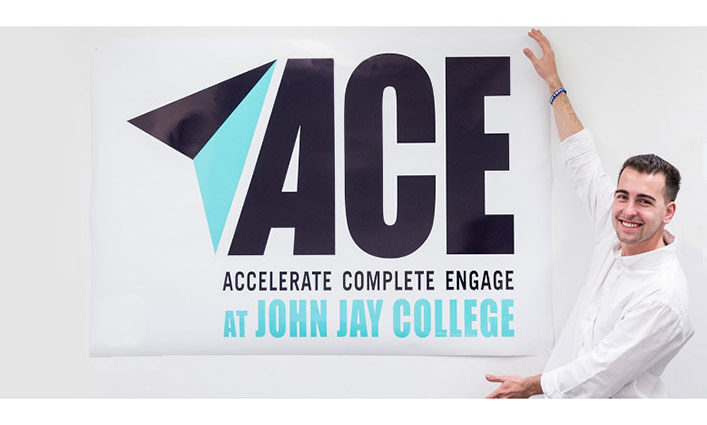
The ACE program at John Jay (Accelerate, Complete, Engage) celebrated its first graduate last month: Piotr Tandek. Tandek was part of the very first cohort of ACE students, and his path to graduation was a unique one. He graduated in just two years, due to a combination of credits earned in high school and a rigorous, non-stop course load that included summer and winter classes. Still, Tandek’s success indicates the potential of CUNY’s and John Jay’s ACE program to deliver on its intended goals.
Designed primarily to increase student retention rates, the ACE program provides a wide array of benefits and resources such as a tuition gap waiver for Pell or TAP recipients, a free monthly Metrocard, a textbook voucher, scholarship opportunities, and a personal advisor and career specialist to individually guide students from entry to graduation, among other benefits. The program is based on the principles of the CUNY Accelerated Study in Associate Programs (ASAP), and aims to help students complete their academic journey in four years.
John Jay was the first college to implement this program, which Chancellor James Milliken said he hopes can be replicated at other four-year CUNY schools.
The program was highlighted in a recent article in Politico, which also featured recent graduate Tandek. As reported in the article, “The first cohort of the ACE pilot at John Jay began in fall 2015 with 262 students. The retention rate at the end of the fall 2016 semester was 83 percent, compared with 78 percent for similar students. Of those retained, 95 percent of ACE students were in good academic standing, according to CUNY data.”
Going forward, all eyes are on John Jay to see just how effective this program can be. If the 2015 cohort continues to outperform students outside of the ACE program, it is likely that the program will see a much wider rollout throughout the CUNY system, and become a national model for retaining and graduating students



